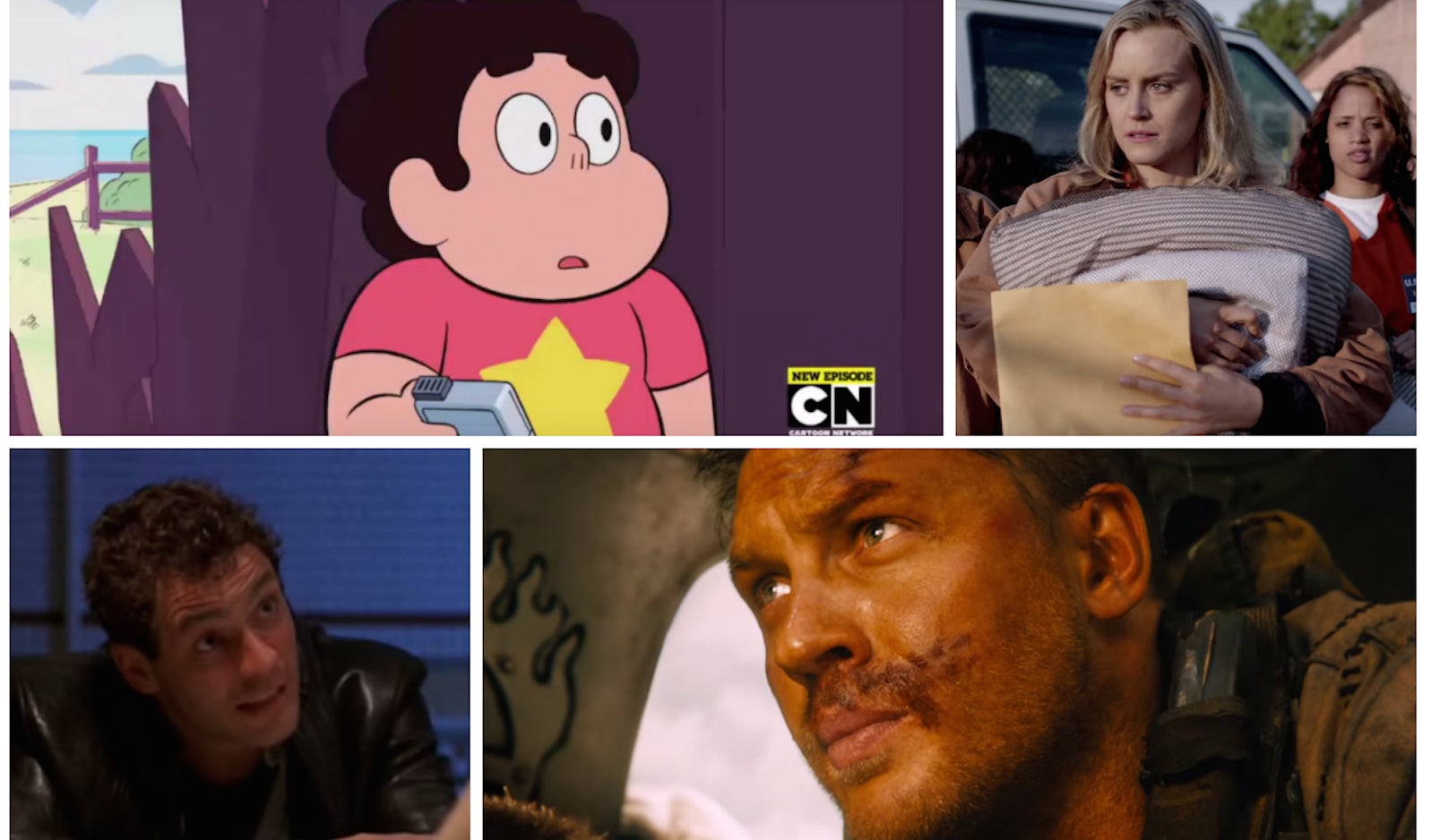How is it possible that we’re still telling diverse stories through the white male lens?
It’s awards season in Hollywood, that lovely time of year when entertainment’s best and brightest gather to give and receive praise. The list of Oscar nominees has been announced, to a predictable mix of cheers and jeers. But first, let’s take a few minutes to remember last weekend, when TV and film industries luminaries converged on Beverly Hills for the Golden Globes. Among the evening’s nominees (though sadly, not winners) was Mad Max: Fury Road, one of the most surprising films of 2015. (Mad Max has also been nominated for several Oscars this year, including Best Picture.)


It’s awards season in Hollywood, that lovely time of year when entertainment’s best and brightest gather to give and receive praise. The list of Oscar nominees has been announced, to a predictable mix of cheers and jeers. But first, let’s take a few minutes to remember last weekend, when TV and film industries luminaries converged on Beverly Hills for the Golden Globes. Among the evening’s nominees (though sadly, not winners) was Mad Max: Fury Road, one of the most surprising films of 2015. (Mad Max has also been nominated for several Oscars this year, including Best Picture.)
As a number of critics have already noted, Mad Max is a deeply feminist film. Though the title puts Max Rockatansky (Tom Hardy) front and center, it is Charlize Theron’s Imperator Furiosa who truly defines the film, with Max literally being taken along for the ride. Yet even though the film truly belongs to Furiosa—and honestly bears only the loosest resemblance to the original Mel Gibson trilogy–it is still (white, male) Max who serves as the anchor, receives top billing, and acts as the audience’s entry point into this world of women.
There’s nothing particularly new about the trope of “relatable” (read: white and male) characters serving as a bridge for stories that take audiences into less familiar terrain. Long before Mad Max: Fury Road, The Wire’s Jimmy McNulty was guiding audiences through the streets of predominantly black Baltimore. More recently, Orange is the New Black’s Piper Chapman filled a similar role, offering a “relatable,” well-off white visage to help audiences acclimate to an environment heavily populated by diverse and varied groups of women of color.
Even works that lay new ground for diversity in television and film seem to have trouble breaking away from this trope. That’s the case with the Cartoon Network’s Steven Universe, which may be one of the most diverse shows on television, featuring characters who span the spectrum in race, age, gender identity, and sexual orientation.
Unlike other shows that dip their toes into the pool of diversity, Steven Universe’s range of identities never feels forced or driven by a “very special” episode arc. Two female characters are deeply in love because that is how their lives unfolded. Steven’s best friend is a South Asian girl because people of a wide range of races are a part of the show’s landscape. Even when characters flirt with gender expression, it’s presented as a completely unremarkable part of daily life—an attitude that’s still relatively unheard of for any show that isn’t Amazon’s Transparent.
It is highly likely that Steven Universe owes its apparently effortless, natural take on diversity to its equally diverse cast and crew. In addition to creator Rebecca Sugar, the show’s creative team boasts a number of women and people of color. On the talent side, three out of four of the show’s lead characters are voiced by people of color, as are many of the show’s supporting roles. And, in a reversal of Hollywood norms, the show even uses non-white actors to voice characters who “read” as white.
Yet as groundbreaking as Steven Universe is, it is still, well, a show called Steven Universe. It centers the storyline of a white male character who—like Max Rockatansky, Jimmy McNulty, and in some respects Piper Chapman—offers a comfortable, familiar point of reference in a world that’s willing, even eager, to leave that “comfortable” point of view behind.
Today we occupy an entertainment landscape in which shows like Black-ish, Fresh Off the Boat, and Jane the Virgin have all found success. It’s been proven, time and again, that shows need not forefront a white male (or even just white) viewpoint in order to be “relatable.” So it’s troubling to see that the creators of shows about women and people of color still seem to believe they need a white male interpreter to keep audiences from getting disoriented.
But perhaps there’s a more optimistic way of looking at the issue. Perhaps we should see the Max Rockatanskys and Steven Universes of film and TV as the last vestiges of a fading era of white male dominance. Although certainly not as diverse as the 2015 Golden Globes, this year’s awards show featured Taraji P. Henson, Oscar Isaac, and Gael García Bernal all walking away with awards. A number of other diverse performers and shows were among the nominees.
The face of Hollywood—and America at large—is clearly changing. With any luck, it won’t be long before the executives who shape our entertainment get the message. Unfortunately, as the incredibly white Oscar nominee list this year proves, it may take longer than we’d like.